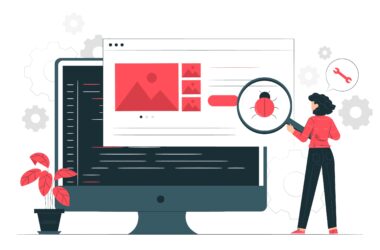Much like any other IT-related industry, data science largely relies on a set of technologies to perform most of its operations. But how do you identify which of these are the most effective? Here are the ten best tools and technologies for data science.
#1 SAS
Statistical Analysis System, also known as SAS, is perhaps one of the oldest data science solutions out there. It is highly valued for its ability to generate high-quality and visually appealing reports, but even beyond that, SAS is often used for all kinds of tasks – remote computing, econometrics, business intelligence, and more. Moreover, SAS is particularly useful for predictive analysis and further visualization of the analysis results and predictions.
Here’s what you can do with SAS:
- Utilize interactive dashboards and extensive functionality
- Access and retrieve data from different sources
- Perform granular analysis of textual data and time series analysis
- Generate detailed and visually appealing reports
- Use different types of analytics (location, augmented, self-service, text)
- Import data, join tables, use data quality features, and more
#2 Excel
One of the most popular Microsoft Office tools, Excel is widely used by people of all ages, professions, and backgrounds. Indeed, Excel is not the primary tool for data science, but it is still beloved by many professionals in the field and used at different levels. In most cases, Excel is the best choice for data scientists who are beginners as it can be a starting platform before you transition to more specialized and advanced solutions. Excel’s simple layout of rows and columns for representing data is precisely why it’s so beginner-friendly.
Much like SAS, Excel is great for visualization though its capabilities extend far beyond that. The tool can process large datasets and has a wide variety of formulas available that can make calculations easier and faster. Moreover, additional features like filters can help users with easier data management. In addition to that, data scientists can also create their own functions and formulae making the tool particularly flexible.
#3 Apache Spark
Apache Spark is known for its ability to perform data science operations with low latency. The tool is based on the Hadoop MapReduce solution and provides a variety of APIs users can utilize in their activities (including Java, Python, and Scala that can be used for app development). This solution is perfect for handling batch processing as well as stream processing among other things.
Marco O’Neal, a data science expert from the custom writing reviews site Best Writers Online, explains, “The best thing about Apache Spark is that it can handle interactive queries while also streaming the processing. Many data scientists also love this tool because of its in-memory cluster computing aspect which speeds up the processing quite a bit. The tool also supports SQL queries, so you will be able to derive different relationships in your dataset.”
#4 MATLAB
If you work for a large organization or enterprise, you may have heard of or even used MATLAB before. This programming platform is ideal for accessing data from databases, flat files, cloud platforms, and more. Moreover, the data types used in MATLAB are specifically designed to reduce the time spent on data pre-processing speeding up your operations a lot. Besides, MATLAB is easy to integrate with other applications and embedded systems which makes it the number one choice for many enterprises.
Interestingly, MATLAB is really helpful for automating a vast majority of your tasks. For instance, you can use it for automating data extraction, the re-use of scripts for decision making, and so much more. That being said, keep in mind that it is a closed-source proprietary software which means you will still encounter some limitations using it.
#5 Tableau
Tableau is known as one of the best data visualization tools for data analysis and decision-making. Launched way back in 2003, Tableau was a transformative tool in the field of data science and has since become a staple for many professionals in the industry. The tool can interface with spreadsheets, databases, OLAP cubes, and more. It has a wide selection of useful features and can be perfect for visualizing geographical data.
For example, you might have a website running with the help of the web hosting provider Whogohost and you are regularly collecting data about your site visitors. To make accurate predictions about what you can expect in the future with your metrics, you can use Tableau to help you make the calculations. Then, you will be able to visualize the data and make better decisions for your future strategy.
#6 BigML
Another popular tool, BigML was initially developed for machine learning but became widely used for working with algorithms in the field of data science. The solution can be used for building and sharing datasets, classifying data, finding anomalies and outliers, and so much more. Its data visualizations capabilities are also quite impressive.
Nicole Griffin, a data scientist from the writing services reviews site Writing Judge, says, “BigML is cloud-based and interactive which is why I love it so much. It’s easy to work with large datasets and perform all kinds of operations – series forecasting, association discovery, topic modeling, you name it. I’m always impressed by how much insight I get while working with BigML and how accurate my future decisions are thanks to it.”
#7 TensorFlow
Similarly to BigML, TensorFlow is also used in machine learning as well as in data science. The tool is pretty much a Python library that is perfect for building and training models, visualizing data, differential programming, and more. The best thing about TensorFlow is that it can run both on CPUs and GPUs as well as on TPUs which makes it exceptionally powerful in terms of processing.
This tool is quite notorious for its performance and high computational abilities. Moreover, it works with different applications used for various tasks, including image and language generation, speech recognition, drug discovery, image classification, and others. TensorFlow is also commonly used with advanced machine-learning algorithms (e.g. Deep Learning).
#8 KNIME
KNIME is an analytics platform that can be used for a variety of purposes, including data mining, analysis, and reporting among other things. KNIME uses a GUI or a Graphical User Interface which makes it incredibly user-friendly and allows data scientists to work with it despite not having much programming expertise. The tool is highly interactive too which is why it has become so popular.
The solution uses the so-called Lego of Analytics which is a data pipelining concept used primarily for the integration of different elements of data science. The best thing about KNIME is that it is open-source and completely free to use while providing an essential set of functions and features. It is quite intuitive while constantly evolving and being developed in its own right.
#9 RapidMiner
RapidMiner is yet another popular data science solution. The tool is perfect for data preparation and can also be used in machine learning. Users can track data in real-time while performing advanced analytics. Other activities you can perform with RapidMiner include data reporting, text mining, model validation, predictive analysis, and so on.
What’s great about RapidMiner is that it is a highly scalable tool that provides maximum security to data scientists using it. In many cases, non-programmers and researchers alike use the tool to perform quick data analysis which is why RapidMiner has been deemed quite user- and beginner-friendly.
#10 Qlik
Last but not least, Qlik (also known as QlikView) is a data science tool used in business intelligence. The solution can be used for a wide variety of processes, including deriving relationships between unstructured data, performing data analysis, demonstrating a visual representation of data, and so on.
QlikView can also be used for data aggregation and compression while automating a variety of tasks. Like some other tools on this list, QlikView uses in-memory data processing which enables the tool to provide results much faster than regular data science solutions of its kind. In other words, it’s yet another option to consider when choosing the right data science tool for your activities.
Final Thoughts
All in all, there are definitely quite a few options for data scientists to choose from. Take this list and try some of the solutions listed in it before you settle for the one that fits your activities the best.










